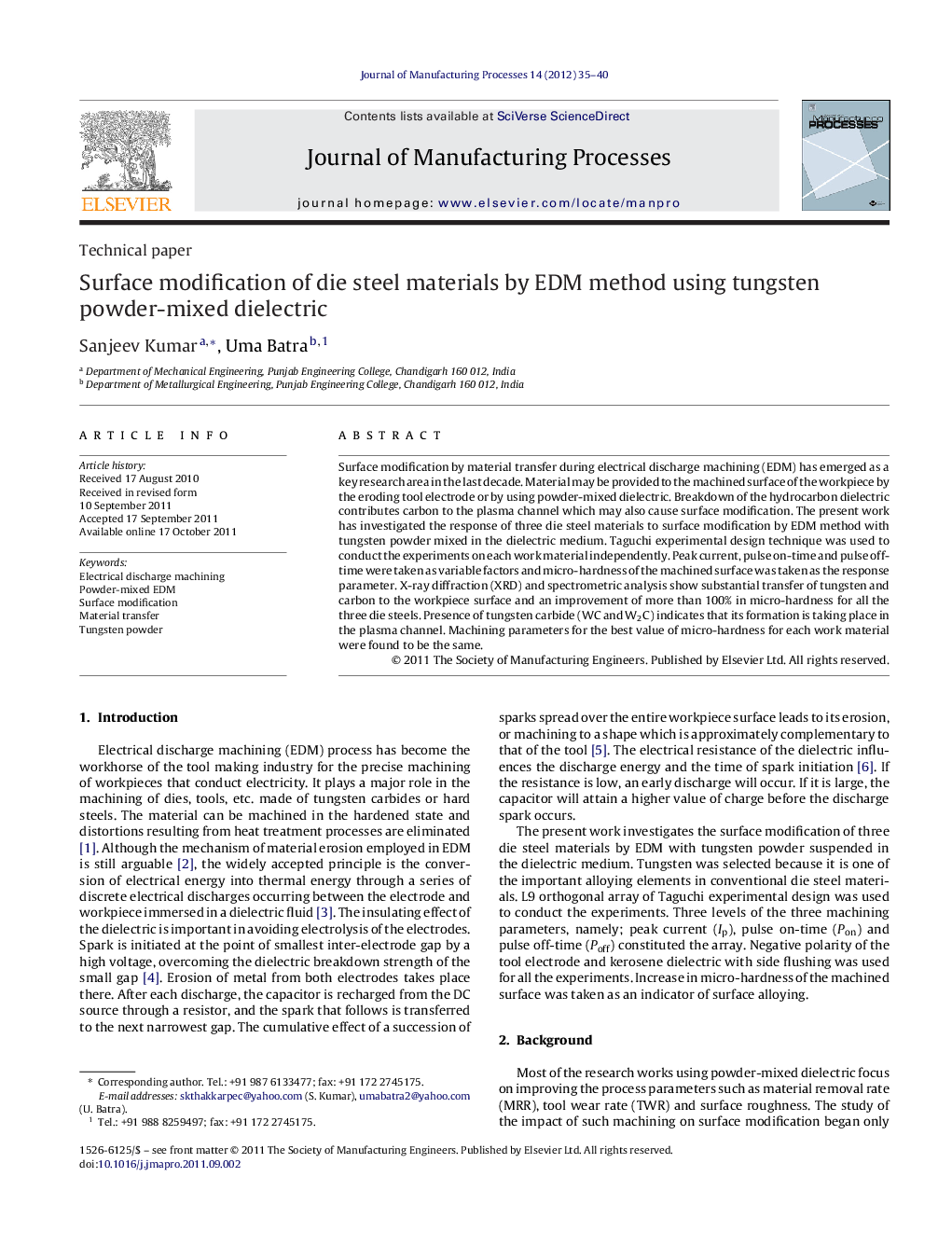| Article ID | Journal | Published Year | Pages | File Type |
|---|---|---|---|---|
| 1697166 | Journal of Manufacturing Processes | 2012 | 6 Pages |
Surface modification by material transfer during electrical discharge machining (EDM) has emerged as a key research area in the last decade. Material may be provided to the machined surface of the workpiece by the eroding tool electrode or by using powder-mixed dielectric. Breakdown of the hydrocarbon dielectric contributes carbon to the plasma channel which may also cause surface modification. The present work has investigated the response of three die steel materials to surface modification by EDM method with tungsten powder mixed in the dielectric medium. Taguchi experimental design technique was used to conduct the experiments on each work material independently. Peak current, pulse on-time and pulse off-time were taken as variable factors and micro-hardness of the machined surface was taken as the response parameter. X-ray diffraction (XRD) and spectrometric analysis show substantial transfer of tungsten and carbon to the workpiece surface and an improvement of more than 100% in micro-hardness for all the three die steels. Presence of tungsten carbide (WC and W2C) indicates that its formation is taking place in the plasma channel. Machining parameters for the best value of micro-hardness for each work material were found to be the same.
